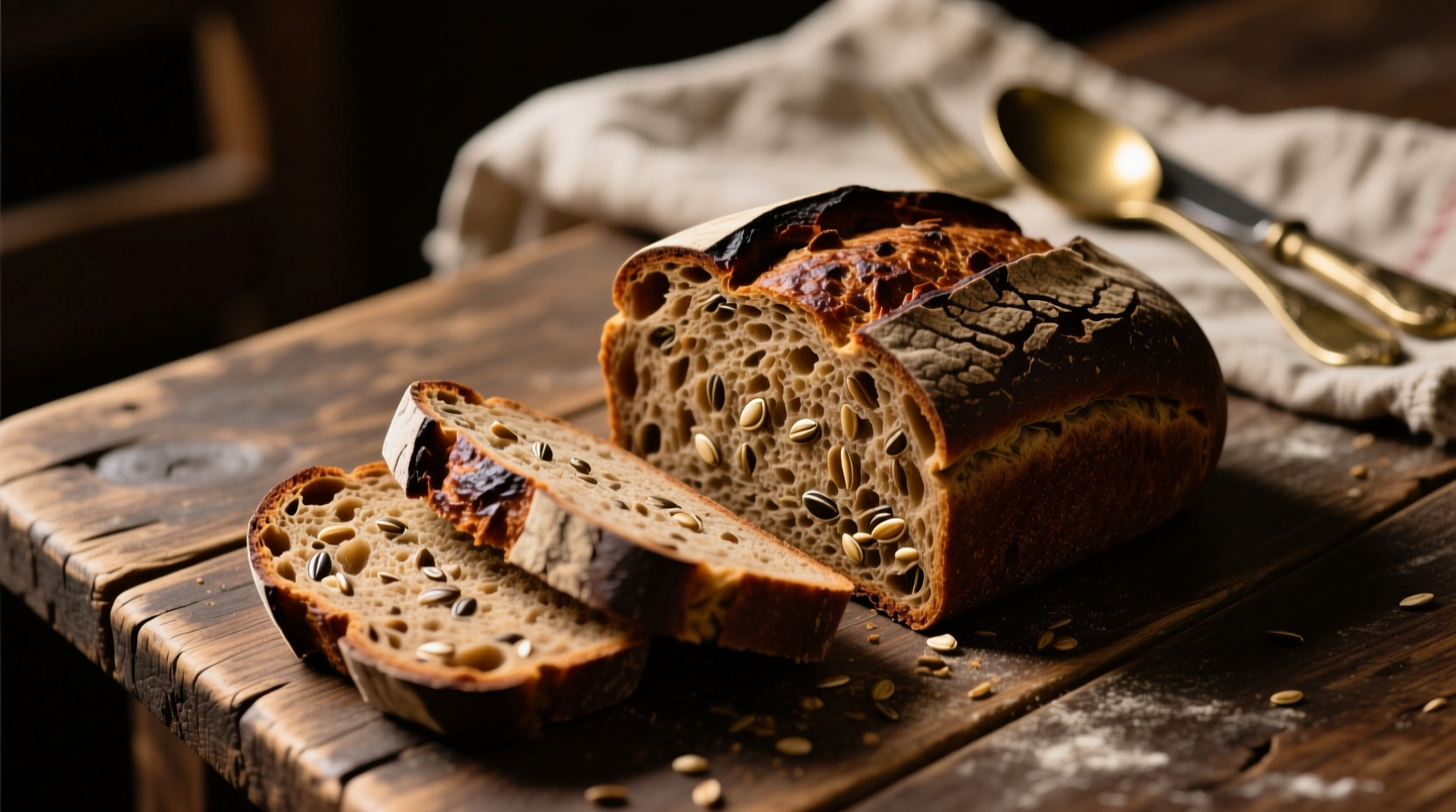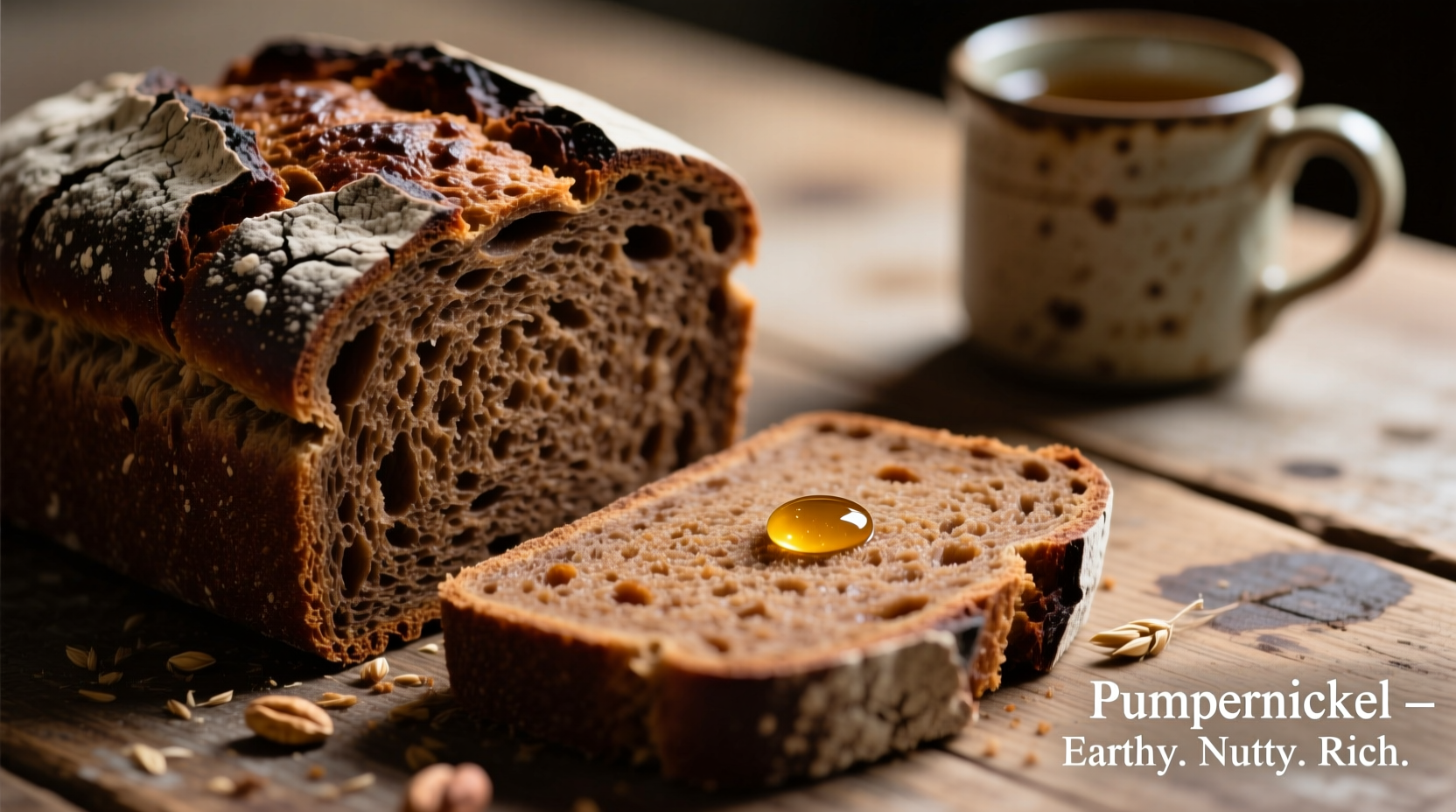If you've ever wondered about the unique taste experience of pumpernickel bread, you're not alone. This traditional German rye bread has captivated palates for centuries with its complex flavor profile that defies simple description. Understanding exactly what pumpernickel tastes like requires exploring its distinctive characteristics, preparation methods, and how it compares to other bread varieties.
The Distinctive Flavor Profile of Pumpernickel
Authentic pumpernickel delivers a multi-layered taste experience that begins with earthy, almost woody notes from the coarse rye flour. Unlike lighter breads, pumpernickel features subtle sweetness reminiscent of dark molasses or caramelized sugar, balanced by a gentle tang from the extended sourdough fermentation process. The flavor complexity deepens with hints of coffee, cocoa, and toasted grains that develop during the traditional 16-24 hour steam baking process.
What sets pumpernickel apart from other rye breads is its remarkably low acidity. While many assume it would be sour like sourdough, authentic pumpernickel maintains a delicate balance where the sour notes play a supporting role rather than dominating the flavor profile. This characteristic makes it remarkably versatile for both sweet and savory applications.

How Traditional Preparation Creates Unique Flavor
The distinctive taste of pumpernickel stems directly from its traditional preparation method. Authentic Westphalian pumpernickel uses coarsely ground whole rye berries rather than refined flour, contributing substantial graininess and nuttiness. The dough undergoes an extended fermentation period—often 16-24 hours—which develops complex flavor compounds while keeping acidity remarkably low.
Unlike conventional baking, traditional pumpernickel is slowly steam-baked at low temperatures (around 120°C/250°F) for up to 24 hours. This prolonged cooking process triggers the Maillard reaction and caramelization, creating the bread's characteristic deep brown color and rich, almost coffee-like flavors without artificial coloring or sweeteners. Modern commercial versions often shortcut this process using additives like molasses, cocoa powder, or coffee to mimic the traditional flavor profile.
| Characteristic | Traditional Pumpernickel | Commercial Pumpernickel | Standard Rye Bread |
|---|---|---|---|
| Primary Flavor Notes | Earthy, coffee, molasses, mild tang | Sweet, artificial molasses, sometimes bitter | Sharp sourness, caraway dominant |
| Acidity Level | Low (pH 5.0-5.5) | Moderate to high | High (pH 4.0-4.5) |
| Color Source | Natural caramelization | Molasses/cocoa powder | Natural rye color |
| Baking Time | 16-24 hours | 2-4 hours | 1-2 hours |
Texture and Aroma Characteristics
Pumpernickel's dense, moist texture significantly influences its taste experience. The tight crumb structure—resulting from rye's lower gluten content—creates a substantial mouthfeel that releases flavors gradually. When sliced properly, it should feel slightly springy yet substantial, never dry or crumbly.
The aroma complements the flavor profile with warm, toasted grain notes, subtle hints of dark chocolate, and a faint sourdough undertone. Unlike many breads that lose aroma quickly, pumpernickel maintains its distinctive scent due to the concentration of flavor compounds developed during extended baking.
How Pumpernickel Has Evolved Over Time
Understanding what pumpernickel tastes like requires examining its historical development. Originally created as a peasant bread in Germany's Westphalia region, traditional pumpernickel dates back to at least the 15th century. The name itself may derive from "Bumpf Nickel" (dung Nick), a derogatory term referencing its dense texture.
- 1400s-1800s: Traditional Westphalian pumpernickel made with coarsely ground whole rye, fermented with sourdough starter, and baked for 16-24 hours in steam-filled ovens
- Late 1800s: German immigrants bring pumpernickel to America, where adaptations begin using wheat flour and shorter fermentation
- Early 1900s: Commercial production introduces shortcuts—molasses for color/sweetness, shorter baking times
- Post-WWII: Mass production leads to significant flavor differences between authentic and commercial versions
- Present Day: Artisanal revival of traditional methods alongside widespread commercial versions
Contextual Factors That Influence Pumpernickel's Taste
Several factors can significantly alter what pumpernickel tastes like in different situations:
- Fermentation duration: Longer fermentation (24+ hours) produces more complex, mellow flavors with lower acidity
- Flour composition: Authentic versions use 100% coarsely ground whole rye; commercial versions often blend with wheat flour
- Baking method: Traditional steam baking creates deeper flavor development than conventional oven baking
- Storage conditions: Properly stored pumpernickel develops richer flavor over 2-3 days as flavors meld
- Slicing technique: Using a serrated knife with gentle sawing motion preserves texture and flavor release
Perfect Pairings That Enhance Pumpernickel's Flavor
The distinctive taste of pumpernickel shines when paired thoughtfully. Its earthy sweetness complements smoked fish exceptionally well—particularly salmon or whitefish salad. For cheese pairings, mild Swiss or creamy Havarti balances pumpernickel's density without overwhelming its subtle flavors.
Sweet applications reveal another dimension of pumpernickel's versatility. Try it with raspberry jam or honey for a sophisticated breakfast that highlights its natural sweetness. The bread's low acidity makes it an excellent base for open-faced sandwiches with roast beef and horseradish, where the flavors complement rather than compete.
Common Misconceptions About Pumpernickel's Taste
Several myths persist about what pumpernickel tastes like. Many believe it should be extremely sour, but authentic versions maintain remarkable balance with only subtle tanginess. Others assume the dark color comes from added cocoa or coffee, when traditional methods achieve this through natural caramelization during extended baking.
Perhaps the most widespread misconception is that all dark rye breads are pumpernickel. True pumpernickel requires specific preparation methods—not just dark color—to achieve its distinctive flavor profile. Understanding these distinctions helps set proper expectations when tasting authentic pumpernickel.
How to Evaluate Quality When Tasting Pumpernickel
When assessing what pumpernickel tastes like, focus on these quality indicators:
- Flavor balance: Look for harmony between earthy, sweet, and tangy notes without any single element dominating
- Mouthfeel: Should be dense but moist, never dry or crumbly
- Aftertaste: High-quality pumpernickel leaves a pleasant, lingering grain flavor rather than bitterness
- Crust development: Traditional versions have a thin, flexible crust that contributes to overall flavor complexity
Commercial versions often reveal their shortcuts through artificial sweetness, bitter aftertastes, or overly sour profiles that lack the nuanced balance of traditionally made pumpernickel.
Bringing Authentic Pumpernickel Flavor to Your Table
To experience what pumpernickel truly tastes like, seek out bakeries using traditional methods or consider making your own. Authentic pumpernickel requires patience—allowing for extended fermentation and proper baking time—but the resulting flavor complexity makes the effort worthwhile. When tasting, take time to notice how the flavors develop from the initial earthy notes through the subtle sweetness to the gentle finish.
Understanding pumpernickel's distinctive taste profile opens doors to appreciating one of bread-making's most sophisticated traditions. Whether enjoyed with classic toppings or as the foundation for creative culinary applications, pumpernickel offers a taste experience that continues to captivate food enthusiasts worldwide.











 浙公网安备
33010002000092号
浙公网安备
33010002000092号 浙B2-20120091-4
浙B2-20120091-4